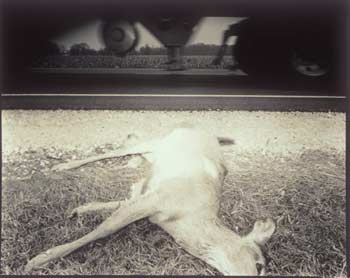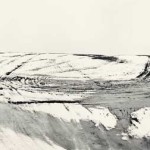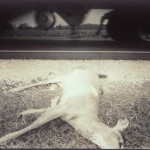I once met a man who collected Beanie Babies. He had thousands of them; ranging from inexpensive Scorch to ultra-collectablePeanut. Like any good collector, he insisted on showing virtually every one of them to me and attempted to convince me of their value. I, similarly, could not explain to him that I simply did not care. Usually, I'm on the other side of conversations like the ones I've had with the Beanie Man. Usually I'm desperately trying to convince someone that a piece of art work has far more value than is readily apparent and usually my listener simply does not care. What I've come to realize is that Beanie Man and I have the same core set of values, he just has an extra set of values that I can't relate to. His beanie values. Similarly, most of my artist friends and I have the same values as other people, we just also have an additional set of values that they don't relate to. I still hang out with Beanie Man because I would much rather be around someone who really loves and values something, anything in their life, than someone who does not know what they value or even worse, values nothing.
Gamber's show Last Radio On spoke directly to me about sets of values, specifically the values of art, science and technology. The parallels between art and science have always been clear as both can find roots in the desire to observe and interpret the world we live in. The differences between art and science are essentially differences of the vocabulary of the description. Physics, for example, uses mathematics to describe a phenomenon while painting uses, well, paint. However, science has gained an added vocabulary over the past few centuries: technology. Technology is science in service of capitalism. Art really does not have an equivalent vocabulary. The closest phrase is probably "graphic design" which can be defined as “the practice or profession of designing print or electronic forms of visual information”.
Last Radio On asks fundamental questions about the relationship between art and technology by simply asking, “What is the last radio on?” For me, it's easier to ask a corollary question, “What was the first fax machine turned on?” The very first fax machine turned on was a device that was about to become technology, however without another fax machine to either send or receive a fax, what was it? Was it merely a scientific marvel? It certainly was not technology because it had no use, yet. The first fax machine turned on was nothing. It was simply on. It was art, to me. And I bet it would have been wonderful to see. Similarly, there will come a time when people don't listen to the radio. The Internet and other more efficient technologies will over take radio broadcasts. So what will the last radio still turned on be when there is nothing broadcasting to it? It will no longer be technology; it will be art, but only to those who have an extra value system. To anyone else who values technology for its usefulness, the last radio on will be nothing.
So to me, Gamber's work is about a change in a value system where something that was once so highly valued for its technological prowess is no longer technology, but has entered the realm of art. Hence, Gamber's beautiful black and white contact prints made from an 8x10 camera. Once the technological marvel of the world, the 8x10 camera is now technology that does not know that it is dead and that the world has passed it by, like a deer hit by a train. Gamber photographed the gymnasium where he and his father played, now with the floorboards torn up. Without any floor, is it still a gymnasium? Gamber shoots the space like a cathedral.
All of this makes sense to me. All of Gamber's photographs make sense to me, but I feel like Beanie Man desperately trying to explain their value to others who simply don't care.
I have purposely oversimplified Gamber's work as a transition of the value of technology, but to me it is really about the desire to hold on to and express an additional value system. Any value system. Gamber's work is also inherently about the mid-west and its values. About the middle class and its values. And many, many more values that seem to exist on the margin.
So I ask, can you relate to any of this? Can you relate to having an additional value system that others around you simply don't seem to care about? And do you feel this desperate need to share your values with others?
Gamber's work strikes right at the heart of what it means to be an artist to me and forces me to ask myself what I value and how I feel about others who have a different value system. Gamber's work shows me his view of the last radio on. In the end, I realize that I really want to see the last radio on and I really want others to see it with me, just like how Beanie Man really wanted to show mePeanut.
How about you?
- Matthew Gamber, Snowmobile Tracks, County Highway 96, Ohio, silver gelatin print, 2003.
- Matthew Gamber, Salem Gymnasium, Wyandot County, Ohio, silver gelatin print, 2002.
- Matthew Gamber, deer, U. S. 30, Wyandot Co., OH, silver gelatin print, 2003
Links:
Gallery Kayafas
All Beanies.com
ThinkQuest
"Last Radio On" was on view until February 26 at Gallery Kayafas located at 450 Harrison Ave., Boston.
"Peanut: The Royal Blue Elephant" is available for sale at All Beanies.com.
Images are courtesy of the artist and Gallery Kayafas.







